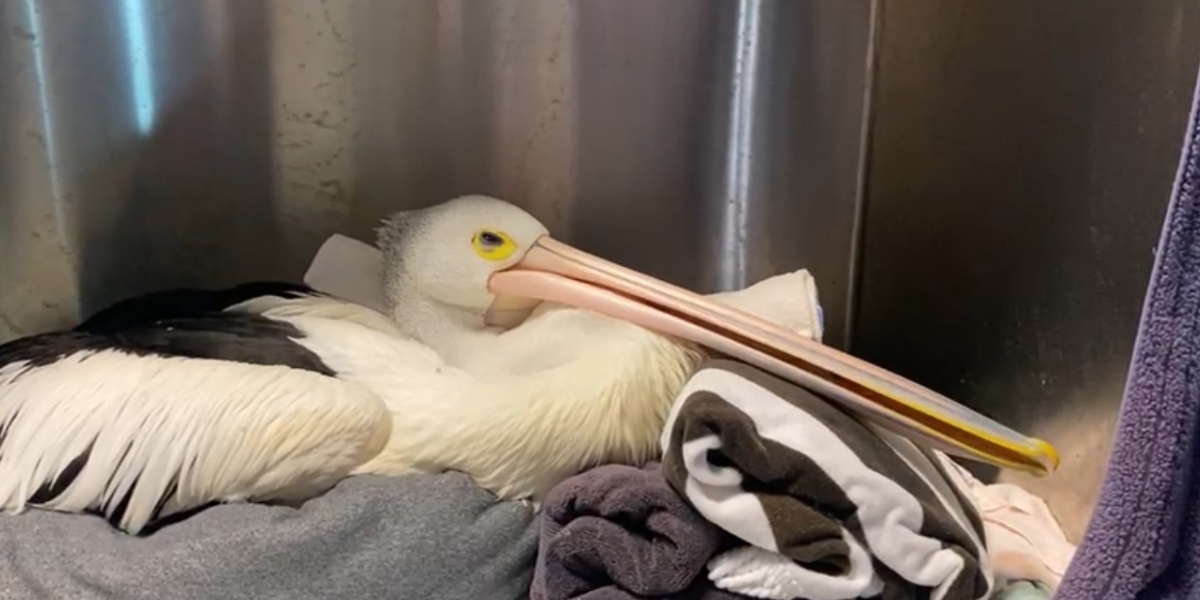Protecting Sydney’s Koalas: Why Corridor Advocacy Is Now Critical
December 2025
For emergency rescue support 24/7 please call 1300 094 737

This beautiful pelican was found weak and unresponsive — eyes closed, unable to move — and suspected of suffering from botulism. Thankfully, a swift call to WIRES set a remarkable rescue in motion.
WIRES carer Inga arrived quickly, but the bird was out of reach. That’s when the NSW SES Camden Unit stepped in, bringing water rescue gear and three incredible volunteers. Together with Inga’s wildlife knowledge, the team safely contained the pelican and got it the help it urgently needed.
The bird was quickly transported to and treated by the University of Sydney’s Wildlife Health and Conservation Hospital Camden, where it received specialist care and began its recovery.
On arrival, the hospital team provided pain relief, placed an IV catheter to administer fluids, and set the bird up with warming and supportive bedding. Blood was also collected for a full diagnostic assessment.
Over the following days, the pelican slowly began to improve. By day two, it was able to lift its head and was receiving nutritional support via tube feeding. Each day brought small but encouraging signs of progress — head held higher, occasional wing flaps, and eventually attempts to stand.
By day five, the pelican stood on its own for the first time and was moved to a wet den, where it began paddling in water. Solid food was gradually introduced to support weight gain, and fluid support continued as needed.
Across 14 days of care, the pelican regained its strength by standing, walking, swimming, and feeding independently. After a final health check confirmed it was fit for release, WIRES volunteer Inga returned to collect the now-strong pelican and released it back to its original habitat.
As part of the University of Sydney’s Doctor of Veterinary Medicine program, final-year students rotate through each of the University’s veterinary teaching hospitals — including the Wildlife Health and Conservation Hospital Camden — to gain hands-on clinical experience. Under the guidance of experienced clinicians, students were actively involved in delivering daily care throughout the pelican’s recovery.
Huge thanks to the NSW SES Camden Unit and the University of Sydney Wildlife Health and Conservation Hospital Camden for their expertise and collaboration — and to Inga for her dedication every step of the way.
Stay in touch and get our regular rescue stories, WIRES updates and a free copy of our 15 Ways to Help Wildlife ebook
November 2025
November 2025
September 2025
August 2025
August 2025